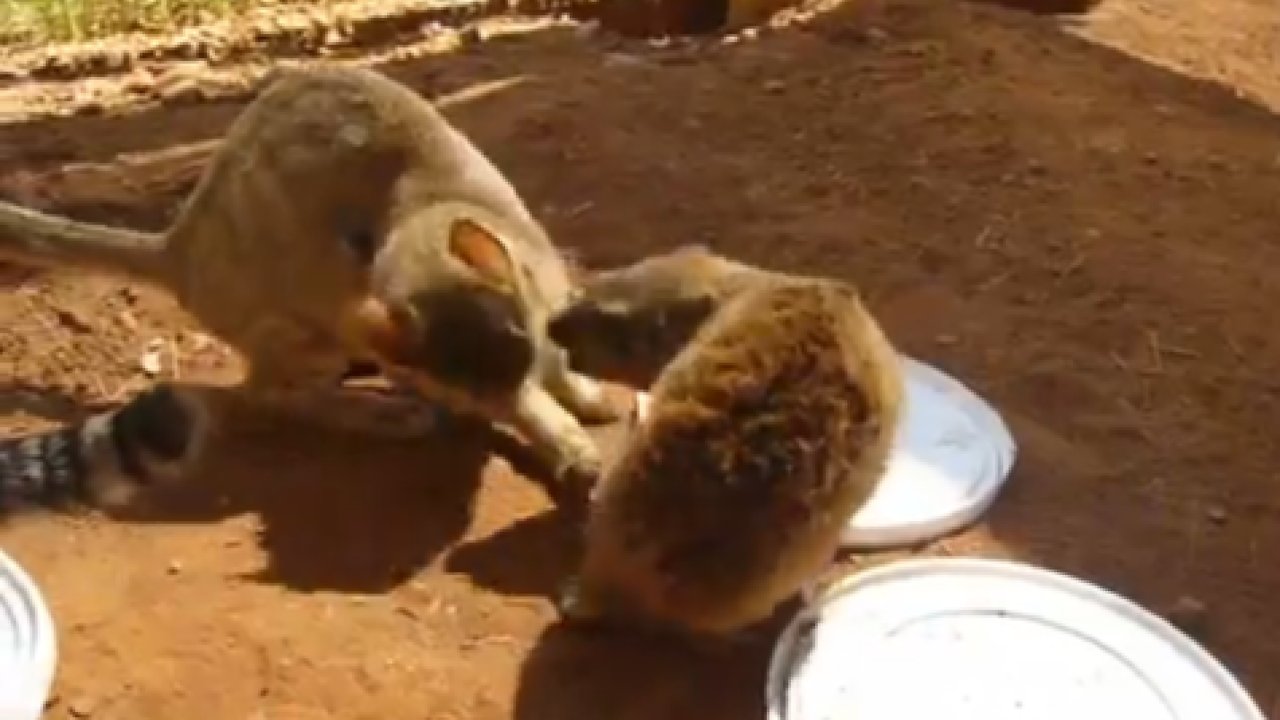Premium Only Content

Rescued Rock Dassie doesn't want the other animals to eat
This rescued Rock Dassie shares the enclosure with other rescued animals, but thinks it is the boss, and does not want to let other animals eat, even carnivores! Animals can have such strong personalities!
The Rock Dassie (Procavia capensis), also known as the Rock Hyrax, or sometimes just Dassie, is a medium-sized mammal that occurs in Africa and the Middle East. It can be found in a wide variety of habitats, such as rainforests, arid deserts, from sea level to Mount Kenya, although they are typically associated with cliffs, boulders, and rocky outcrops, which gives it its name.
Its great range means that there are many variations of the same species; in fact, 17 subspecies are recognized: Procavia capensis capensis (Cape Hyrax), Procavia capensis bamendae (Bamenda Highlands Rock Hyrax), Procavia capensis habessinica (Abyssinian Hyrax), Procavia capensis jayakari (Arabian Rock Hyrax), Procavia capensis johnstoni (Johnston's Hyrax), Procavia capensis matschiei (Tanzania Rock Hyrax), Procavia capensis ruficeps (Western Rock Hyrax), Procavia capensis syriaca (Syrian Hyrax), Procavia capensis welwitschii (Kakoveld Hyrax), Procavia capensis capillosa, Procavia capensis erlangeri, Procavia capensis jacksoni, Procavia capensis kerstingi, Procavia capensis mackinderi, Procavia capensis pallida, Procavia capensis scioana, and Procavia capensis sharica. It is, however, the sole extant member of the Procavia genus, but shares the Procaviidae family with the Southern Tree Hyrax (Dendrohyrax arboreus), the Western Tree Hyrax (Dendrohyrax dorsalis), the Eastern Tree Hyrax (Dendrohyrax validus), and the Yellow-spotted Rock Hyrax (Heterohyrax brucei).
Rock Dassies are herbivores and eat a variety of grasses, forbs and shrubs, buds, fruits and berries. Adults may reach a length of 50 cm and weigh around 4 kg, although there is a subtle sexual dimorphism, and males are about 10% heavier than females.
The color of their coat varies according to the habitat they live in, from dark brown in wetter environments, to light grey in desert areas.
-
 0:31
0:31
NataliaCara
2 years agoAdorable rescued Crab-eating Fox pup wants to catch what's making the weird noise
204 -
 2:46
2:46
KMTV
3 years agoHundreds of animals rescued by NHS
16 -
 47:17
47:17
Kimberly Guilfoyle
3 hours agoWoke Gets DOGE’d, Live with AJ Rice & Jarrett Stepman | Ep. 197
18.3K11 -
 20:11
20:11
Candace Show Podcast
2 hours agoBecoming Brigitte: Candace Owens x Xavier Poussard | Ep 6
45.9K167 -
 LIVE
LIVE
Dr Disrespect
6 hours ago🔴LIVE - DR DISRESPECT - ELDEN RING DLC - REVENGE
3,461 watching -
 1:01:52
1:01:52
In The Litter Box w/ Jewels & Catturd
23 hours agoBest Presidents' Day Ever! | In the Litter Box w/ Jewels & Catturd – Ep. 743 – 2/17/2025
70.1K49 -
 1:29:15
1:29:15
Simply Bitcoin
6 hours ago $6.51 earnedThey JUST Triggered A Global Gold Rush: $1M Bitcoin is coming! | EP 1184
68K24 -
 1:50:47
1:50:47
The Quartering
6 hours agoElon Musk's 13th Baby, Trump Attends Daytona 500, and Ramaswamy Enters the Ohio Governor's Race
91.2K38 -
 1:28:04
1:28:04
Russell Brand
6 hours agoBREAKING: UK Troops To Ukraine | Zelensky Wants “Army Of Europe” | JD Vance SLAMS EU Tyranny – SF538
164K51 -
 1:46:20
1:46:20
Benny Johnson
7 hours agoPANIC: Feds FLEE DC After Mass PURGE, Fired USAID Activists EXPOSED | Trump DOMINATES Daytona 500
153K157